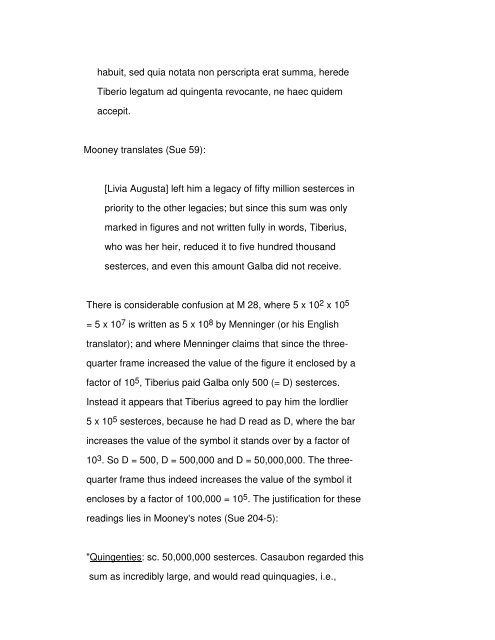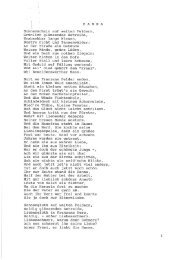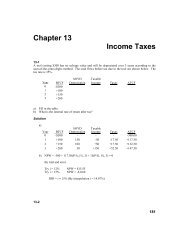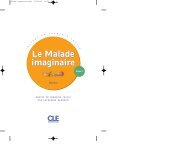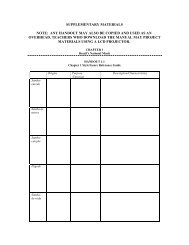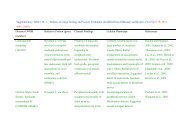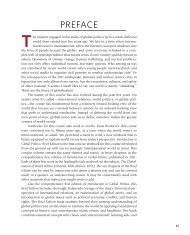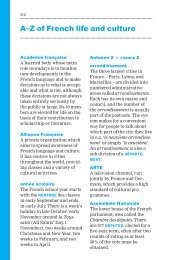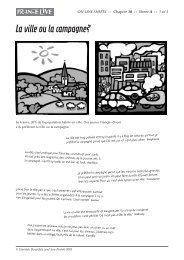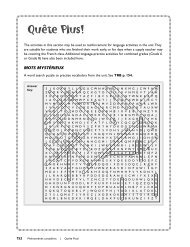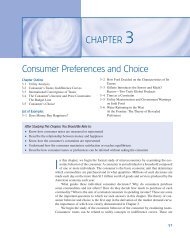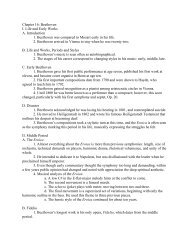Notes and bibliography - Oxford University Press
Notes and bibliography - Oxford University Press
Notes and bibliography - Oxford University Press
You also want an ePaper? Increase the reach of your titles
YUMPU automatically turns print PDFs into web optimized ePapers that Google loves.
habuit, sed quia notata non perscripta erat summa, herede<br />
Tiberio legatum ad quingenta revocante, ne haec quidem<br />
accepit.<br />
Mooney translates (Sue 59):<br />
[Livia Augusta] left him a legacy of fifty million sesterces in<br />
priority to the other legacies; but since this sum was only<br />
marked in figures <strong>and</strong> not written fully in words, Tiberius,<br />
who was her heir, reduced it to five hundred thous<strong>and</strong><br />
sesterces, <strong>and</strong> even this amount Galba did not receive.<br />
There is considerable confusion at M 28, where 5 x 10 2 x 10 5<br />
= 5 x 10 7 is written as 5 x 10 8 by Menninger (or his English<br />
translator); <strong>and</strong> where Menninger claims that since the threequarter<br />
frame increased the value of the figure it enclosed by a<br />
factor of 10 5 , Tiberius paid Galba only 500 (= D) sesterces.<br />
Instead it appears that Tiberius agreed to pay him the lordlier<br />
5 x 10 5 sesterces, because he had D read as D, where the bar<br />
increases the value of the symbol it st<strong>and</strong>s over by a factor of<br />
10 3 . So D = 500, D = 500,000 <strong>and</strong> D = 50,000,000. The threequarter<br />
frame thus indeed increases the value of the symbol it<br />
encloses by a factor of 100,000 = 10 5 . The justification for these<br />
readings lies in Mooney's notes (Sue 204-5):<br />
"Quingenties: sc. 50,000,000 sesterces. Casaubon regarded this<br />
sum as incredibly large, <strong>and</strong> would read quinquagies, i.e.,


